Photo Credit: Shane Armas Korpisto
In recent years, many a Western journalist has descended upon the Lebanese capital of Beirut to captivate audiences with tales of the magically multisectarian life in the city, with its seemingly irreconcilable elements: Hezbollah and nightclubs, hijabs and billboard lingerie ads.
In 2010, The New York Times travel section discovered that, “[i]n a city of many faiths—Christian, Sunni, Shiite, Druze—at least one religion is universally practiced: sun worship,” and that “hordes of heliophiles . . . cultivate their bronzed exteriors” at high-end beach resorts. Never mind that the majority of Lebanese face serious impediments, both financial and religious, to baring their exteriors at such locales.
A Lebanese public committed to superficial materialism is perhaps an easier sell than reality, and the Times offers a “final Beirut investment tip: suntan oil.”
Another self-appointed promoter and political-cultural observer of the territory is roving celebrity chef Anthony Bourdain, who declares Lebanon “fully functioning, more or less” despite its history of hostilities and its 18 different recognized sects. Beirut, he insists, is a wonderland “EVERYONE should visit.”
Even though his school no longer existed, and even though the woman admitted there was a good chance her son was dead, she said she kept the bag there as proof to him that she hadn’t forgotten.
The country does indeed appear to be functioning rather well these days, especially when compared to neighboring war-stricken Syria. But as impressed as the international Orientalist community may be by the juxtaposition of Islam and mini-skirts, the fact of the matter is that Lebanon itself remains in the throes of its own civil war.
As official history tells it, the Lebanese civil war was a 15-year-long affair that was brought to a close in 1990. Characterized by ever-evolving battle lines, inter- and intra-sectarian showdowns, foreign meddling, massacres, assassinations, and a bloody invasion by Israel in 1982, the conflict resulted in an estimated 150,000 deaths. At least 17,000 more “disappeared”—and those unknown fates are but one reason the war is far from over and done with.
I met recently in Beirut with a Lebanese humanitarian worker who has conducted extensive interviews with families of the missing. He described the families as inhabiting a world akin to a “time capsule that is mummified,” unable to grieve properly and condemned to a psychological limbo in the absence of any definitive information regarding their loved ones.
One interviewee, a Palestinian mother whose four children went missing in the Beirut refugee camps of Sabra and Shatila—site of a wartime massacre of up to several thousand civilians by Israeli-backed Christian militiamen—still kept her youngest son’s schoolbag positioned behind the door in her house. Even though his school no longer existed, and even though the woman admitted there was a good chance her son was dead, she said she kept the bag there as proof to him that she hadn’t forgotten.
The entire nation is also psychologically stuck. Under the guise of a forgive-and-forget policy, the Lebanese state has effectively thwarted any meaningful reckoning with the past. Lebanese schools do not even teach the history of the civil war. As the website of the Beirut-based UMAM Documentation and Research organization notes, “each community [in the country] has established a self-serving history based on oversimplified dichotomies of victim and victimizer” that are then “manipulated for political purposes.”
Physical space in Lebanon is also manipulated to serve politicized and sectarian ends. Take one example: just down the road from the apartment where I’m currently staying in Beirut’s primarily Christian neighborhood of Ashrafiyeh is a monument to the Lebanese Phalangist party. At the center is a kneeling figure performing a fascist salute in the direction of the party’s symbol, a cedar tree. The Phalangist militia was one of the key perpetrators of the 1982 Sabra and Shatila massacre. So much for “forgetting.”
So who benefits from Lebanon’s pretend post-war reconciliation? The country’s sectarian elite, of course. Thanks to a general amnesty and the essential institutionalization of impunity, warlords and militiamen were able to transition almost seamlessly into postwar politics—despite having just presided over mass bloodshed. Looking at the political lineup today, you’d be forgiven for thinking yourself inside a time capsule of sorts. As Lebanese journalist Habib Battah succinctly put it: “[If] the warlords are still in the highest positions of power, is the war really over to begin with?”
Toward one another, the leaders have proven intermittently forgiving; in January, long-time fierce rivals Samir Geagea and Michel Aoun staged a schizophrenic rapprochement, with the former backing the latter’s bid for the presidency (a post that has been vacant for nearly two years). Certain observers branded the move evidence of further “reconciliation” for a conflicted nation, but the R-word hardly applies to a situation in which elites work to maintain a divided public so as to safeguard their own corrupt stranglehold on power.
Surely it’s nothing a little suntan oil can’t fix.
Belén Fernández is the author of The Imperial Messenger: Thomas Friedman at Work (Verso). She is a contributing editor at Jacobin magazine.

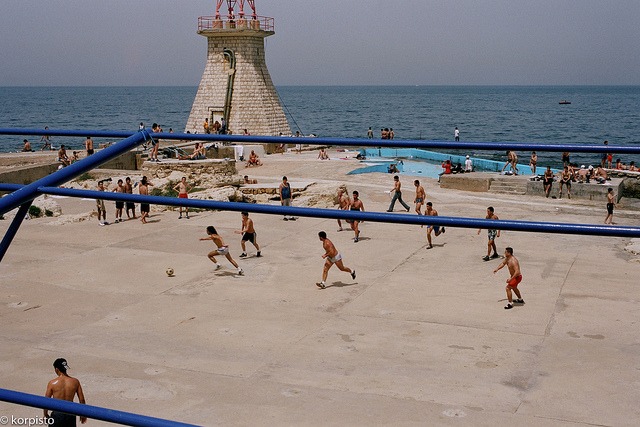
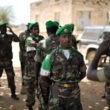
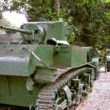
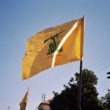
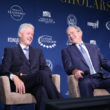

0 Comments